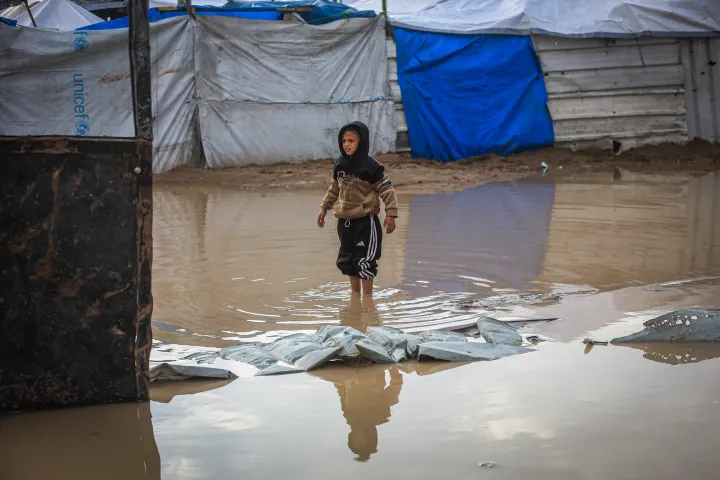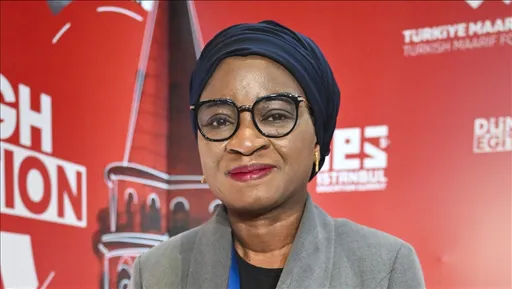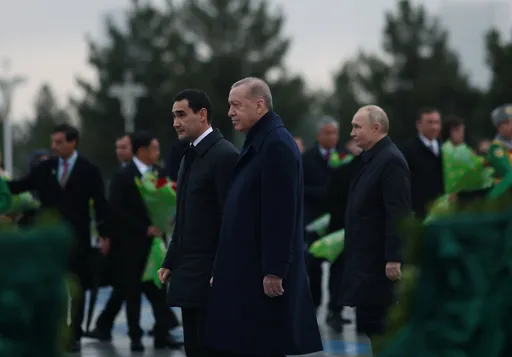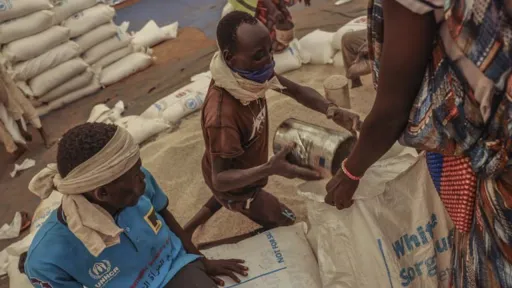By Sylvia Chebet
As world leaders, experts in climate science and climate activists converge in Baku, Azerbaijan, for the COP29 summit, citizens across the world are keen to follow the talks touted as critical to the planet's future.
Climate-related vocabulary is, however, complex for many people world over.
Mix climate science and the political language of global treaty negotiations, and you have the recipe for a (rapidly warming) cauldron of alphabet soup.
Here is a compilation and meaning of some of the relatively complex climate-related terms.
Here are 25 common terms:
1. Adaptation: This is the practice of preparing for and adjusting to the impacts of climate change. It touches on livelihoods, health care, improving water and food systems, resilient infrastructure, early warning systems and disaster preparedness.
2. Carbon Footprint: This is the total amount of greenhouse gases that are emitted into the atmosphere each year by a person, family, building, organisation, or company. A person's carbon footprint includes greenhouse gas emissions from fuel that an individual burns directly — by driving, using electricity and gas at home — and indirectly through production of goods or services.
3. Carbon sink: This refers to anything that absorbs more carbon dioxide from the atmosphere than it releases. Forests, soil and the ocean are the world’s largest carbon sinks. In contrast, a carbon source is anything that releases more carbon into the atmosphere than it absorbs. Continued reliance on fossil fuels for energy means billions of tonnes of carbon are released into the atmosphere every year.
4. Climate change: Climate change refers to any significant change in the measures of climate, lasting for an extended period of time. This includes major changes in temperature, precipitation, or wind patterns over decades.
4. Climate finance: This refers to money for mitigation, adaptation, as well as loss and damage. Rich countries — which have historically contributed the most to climate change — are obligated under international agreements to lead in paying for climate finance. The "polluter pays" principle holds that those responsible for causing climate change should finance the response. Developed countries agreed in 2009 to provide $100 billion a year in climate finance to developing countries by 2020. That pledge is however yet to be achieved.
5. Carbon credits: They work like permission slips for emissions. When a company buys a carbon credit (usually from the government), they gain permission to generate one tonne of carbon emissions. With carbon credits, carbon revenue flows vertically from companies to regulators. Carbon offsets, on the other hand,allows revenue to flow horizontally between companies. When a company removes a unit of carbon from the atmosphere as part of its daily operations, it can generate a carbon offset. Other companies can then purchase that carbon offset to reduce their own carbon footprint. A carbon marketallows investors and corporations to trade both carbon credits and carbon offsets simultaneously.
6. Conference of the Parties (COP): The supreme body of the United Nations Framework Convention on Climate Change (UNFCCC), comprising 198 nations that have ratified the Convention. Established in 1992 to tackle human-caused climate change, the first COP convened in Berlin, Germany in1995. The Kyoto Protocol was adopted during COP3 in Japan in December 1997 to reduce carbon dioxide emissions . The Paris Agreement adopted in France during the COP21 summit targets to keep the global temperature rise as low as 2°C.
7. CVF: The Climate Vulnerable Forum is a high-level "cooperation platform" linking heads of state from countries most affected by climate change. It is a relatively new group formed in 2009.
8. Developed and developing: The UN climate convention (UNFCCC) still follows rules set in 1992 in which countries are classified as "developed" or "developing." The labels are meant to define who has the onus and ability to fund climate action and who is owed help. Least Developed Countrieshave low indicators of socio-economic development and human resources, as well as economic vulnerability, as determined by the United Nations.
9. Emissions: The release of a substance (usually a gas when referring to climate change) into the atmosphere.
10. Global Warming: This the recent and ongoing global average increase in temperature near the earth's surface.
11. Greenhouse Gas (GHG): Any gas that absorbs infrared radiation in the atmosphere. Greenhouse gases include, carbon dioxide, methane, nitrous oxide, ozone, among others.Methane's global warming potential is estimated to be 25 times more than that of carbon dioxide (CO2). It is produced through decomposition of waste in landfills, animal digestion, production and distribution of natural gas and petroleum, coal production, and incomplete fossil fuel combustion.
12. Fossil fuel subsidies (FFS): Climate advocates want governments to slash billions in subsidies to fossil fuel industries, and instead divert the cash to climate financing. Vanuatu became the first national government to sign on to the Fossil Fuel Non-Proliferation Treaty (FFNPT)in September 2022.
13. Heat Wave: Refers to a prolonged period of excessive heat, often combined with excessive humidity.
14. Intergovernmental Panel on Climate Change(IPCC): This is the expert body that sifts through and puts together the rapidly expanding trove of scientific research into a huge compilation outlining what we know about climate change. The IPCC publishes "special reports (SRs)" on specific topics.
15. Loss and damage: This refers to the impacts of disasters caused by climate change. COP27in Dubai saw a breakthrough agreement to create a dedicated loss and damage fund. The fund was approved at COP28held in Cairo, Egypt. It is called the Fund for Responding to Loss and Damage (FRLD).
16. Mitigation: Refers to efforts to reduce the greenhouse gas (GHG) emissions that are driving global warming. Climate activist are keen to see a fossil fuel phaseout agreement, where the world would set a clear timeline for ending the use of coal, oil, and gas.
17. New Collective Quantified Goal on climate finance (NCQG): The plan, struckunder the Paris Agreement, to agree on a much higher climate finance target in 2024, compared to the previous goal of $100 billion per year by 2020.
18. Nationally Determined Contributions (NDCs): They outline each country’s actions to reduce emissions and adapt to a warming world. NDCs are essentially national game plans to fight climate change.
19. World Meteorological Organization (WMO): The UN body that assists national and regional meteorological bodies with research and helps to set standards on tracking extreme weather. It also studies climate trends. It recently concluded that 2024 will be the hottest year on record, and 2015-2024 will be the warmest 10 years.
20. Megacities: These are cities with respective populations exceding10 million people.
21. Ozone: This is a gaseous atmospheric constituent created by the interaction between sun's rays and molecular oxygen (O2).
22. Ozone Layer: This refers to the layer of ozone that begins approximately 15 kilometres above earth, and thins to an almost negligible amount at about 50 kilometres. The layer shields the earth from the sun's harmful rays.
23. Renewable Energy: It refers to energy resources that are naturally replenishing such as hydropower, geothermal, solar, wind, among others.
24. Resilience: A capability to anticipate, prepare for, respond to, and recover from significant threats with minimum damage to social well-being, the economy, and the environment.
25. Vulnerability: This is the degree to which a system is susceptible to, or unable to cope with, adverse effects of climate change.
➤Click here to follow our WhatsApp channel for more stories.
























